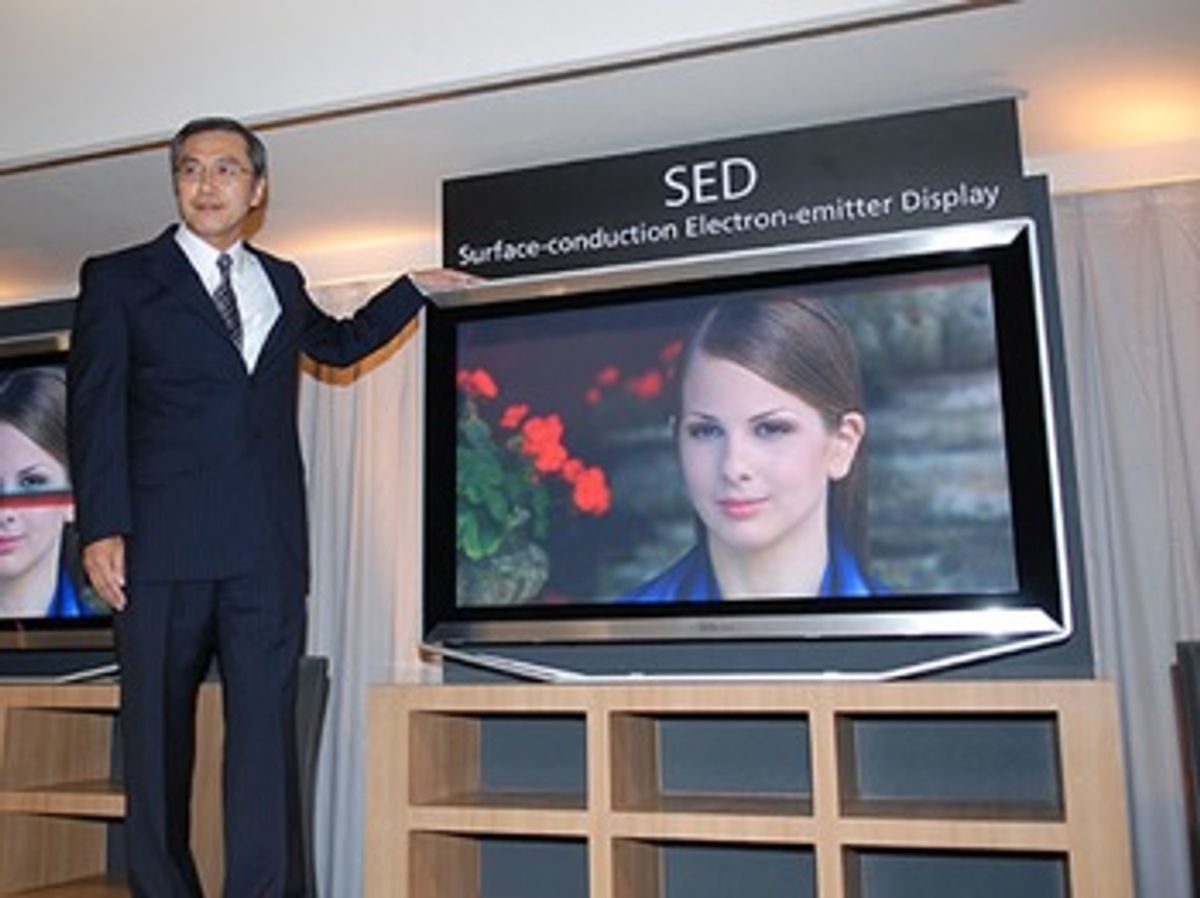But nobody thinks they’re perfect. They don’t have a great contrast ratio—CRTs display much darker blacks and brighter whites. Fast motion creates a blur, unless they’re stuffed with extra processing power to play tricks with the images. After five years, the fluorescent backlights dim and the colors change; even LED-lit LCDs fade after about ten years. They sure aren’t going to have a great picture as long as my 20-some-year-old CRT, which is still going strong.
So a lot of us hoped they’d just be a temporary solution, and some new technology in the works would bring back the great colors and lifetime of the CRT in a big, flat format. Back in 2004, Canon and Toshiba announced that they had the answer—SED, or surface-conduction-electron-emitter display. SEDs, like CRTs, create an image by hitting phosphors with electrons, but instead of a big electron gun that scans rows of phosphors, SEDs use an array of tiny electron emitters, each of which produces a single pixel. This truly looked like the technology that would capture the best of both worlds—the fast response time, great color, and high contrast of CRTs, and the lower power, bigger sizes, and thin screens of LCD. The two companies set up a joint venture, SED Inc., to commercialize the technology. Toshiba predicted that, by 2010, at least a third of TVs over 40 inches sold to consumers would be SED models.
Manufacturing was supposed to be easy; SEDs can be printed with an inkjet-type of device. In 2006, however, Spectrum reported that the companies were having trouble with yields. In 2007, Canon announced that it was still working to bring down production costs, and commercialization would be delayed.
“It all came down to production costs,” Paul O’Donovan, a principal analyst with Gartner, told me. Back in 2007, he said, SEDs were rumored to cost five times as much as LCDs to produce. “They had no chance of being able to reduce those costs fast enough to compete with LCDs,” O’Donovan said.
So it was perhaps no surprise that earlier this year Canon announced that it was no longer going to try to make a consumer SED TV. At the time, the company said it was continuing to work on the technology for the commercial market. But last month it pulled the plug on little SED Inc. It’s over.
Says O’Donovan, “It’s a shame really, as SED was by far the best quality of all the flat panel displays. It just goes to show that the best quality is not always what the market wants if there is a cheaper ‘acceptable’ alternative solution.”
Photo: SEDtechnology.net
Tekla S. Perry is a senior editor at IEEE Spectrum. Based in Palo Alto, Calif., she's been covering the people, companies, and technology that make Silicon Valley a special place for more than 40 years. An IEEE member, she holds a bachelor's degree in journalism from Michigan State University.




